3D Printing of Shiitake Mushroom Incorporated with Gums as Dysphagia Diet
Abstract
:1. Introduction
2. Materials and Methods
2.1. Experimental Design
2.2. Materials
2.3. Preparation of Shiitake/Gum Mixed Ink for 3D Printing
2.4. 3D Printing
2.5. Rheology Tests
2.6. Low Field Nuclear Magnetic Resonance (LF-NMR) Measurement
2.7. Fourier Transforms Infrared (FTIR) Analysis
2.8. Texture Profile Analysis (TPA)
2.9. International Dysphagia Diets Standardization Initiative (IDDSI) Test
2.10. Statistical Analysis
3. Results and Discussion
3.1. Rheological Properties
3.1.1. Yield Behavior
3.1.2. Viscosity and Shear Thinning Behavior
3.1.3. Viscoelasticity Behavior
3.1.4. Creep Deformation Behavior
3.2. Water Mobility Studied by LF-NMR
3.3. Intermolecular Interaction Analyzed by FTIR
3.4. Texture Properties
3.5. IDDSI Tests
3.6. 3D Printing Behavior
4. Conclusions
Author Contributions
Funding
Institutional Review Board Statement
Informed Consent Statement
Data Availability Statement
Conflicts of Interest
References
- Alagiakrishnan, K.; Bhanji, R.A.; Kurian, M.J.G. Evaluation and management of oropharyngeal dysphagia in different types of dementia: A systematic review. Arch. Gerontol. Geriatr. 2013, 56, 1–9. [Google Scholar] [CrossRef] [PubMed]
- Tokifuji, A.; Matsushima, Y.; Hachisuka, K.; Yoshioka, K. Texture, sensory and swallowing characteristics of high-pressure-heat-treated pork meat gel as a dysphagia diet. Meat Sci. 2013, 93, 843–848. [Google Scholar] [CrossRef]
- Yoshioka, K.; Ai, Y.; Matsushima, Y.; Hachisuka, K.; Ikeuchi, Y. Effects of High Pressure on the Textural and Sensory Properties of Minced Fish Meat Gels for the Dysphagia Diet. Food Nutr. Sci. 2016, 7, 732–742. [Google Scholar] [CrossRef] [Green Version]
- Bannerman, R.E.; Mcdermott, K. Dietary and Fluid Intakes of Older Adults in Care Homes Requiring a Texture Modified Diet: The Role of Snacks. J. Am. Med. Dir. Assoc. 2011, 12, 234–239. [Google Scholar] [CrossRef]
- Wright, L.; Cotter, D.; Hickson, M.; Frost, G. Comparison of energy and protein intakes of older people consuming a texture modified diet with a normal hospital diet. J. Hum. Nutr. Diet. 2010, 18, 213–219. [Google Scholar] [CrossRef] [PubMed]
- Liu, Z.; Zhang, M.; Bhandari, B.; Wang, Y. 3D printing: Printing precision and application in food sector. Trends Food Sci. Technol. 2017, 69, 83–94. [Google Scholar] [CrossRef] [Green Version]
- Sun, J.; Zhou, W.; Huang, D.; Fuh, J.Y.H.; Hong, G.S. An Overview of 3D Printing Technologies for Food Fabrication. Food Bioprocess. Technol. 2015, 8, 1605–1615. [Google Scholar] [CrossRef]
- Dick, A.; Bhandari, B.; Dong, X.; Prakash, S. Feasibility study of hydrocolloid incorporated 3D printed pork as dysphagia food. Food Hydrocoll. 2020, 107, 105940. [Google Scholar] [CrossRef]
- Dick, A.; Bhandari, B.; Prakash, S. Printability and textural assessment of modified-texture cooked beef pastes for dysphagia patients. Future Foods 2021, 3, 100006. [Google Scholar] [CrossRef]
- Kouzani, A.Z.; Adams, S.; Whyte, D.J.; Oliver, R.; Hemsley, B.; Palmer, S.; Balandin, S. 3D Printing of Food for People with Swallowing Difficulties. KnE Eng. 2017, 2, 23–29. [Google Scholar] [CrossRef]
- Pant, A.; Lee, A.Y.; Karyappa, R.; Lee, C.P.; An, J.; Hashimoto, M.; Tan, U.X.; Wong, G.; Chua, C.K.; Zhang, Y. 3D food printing of fresh vegetables using food hydrocolloids for dysphagic patients. Food Hydrocoll. 2021, 114, 106546. [Google Scholar] [CrossRef]
- Huang, Q.; Qian, X.; Jiang, T.; Zheng, X. Effect of chitosan and guar gum based composite edible coating on quality of mushroom (Lentinus edodes) during postharvest storage. Sci. Hortic. 2019, 253, 382–389. [Google Scholar] [CrossRef]
- Morales, D.; Tejedor-Calvo, E.; Jurado-Chivato, N.; Polo, G.; Soler-Rivas, C. In vitro and in vivo testing of the hypocholesterolemic activity of ergosterol- and β-glucan-enriched extracts obtained from shiitake mushrooms (Lentinula edodes). Food Funct. 2019, 10, 7325–7332. [Google Scholar] [CrossRef]
- Xiaofei, X.; Huidan, Y.; Jian, T.; Jian, C.; Xuewu, Z. Polysaccharides in Lentinus edodes: Isolation, Structure, Immunomodulating Activity and Future Prospective. Crit. Rev. Food Sci. Nutr. Food Sci. 2014, 54, 474–487. [Google Scholar]
- Liu, Z.; Bhandari, B.; Prakash, S.; Zhang, M. Creation of internal structure of mashed potato construct by 3D printing and its textural properties. Food Res. Int. 2018, 111, 534–543. [Google Scholar] [CrossRef] [PubMed]
- International Dysphagia Diet Standardization Initiative. Complete IDDSI Framework. Detailed Definitions 2.0: Licensed under the CreativeCommons Attribution Sharealike 4.0 License. 2019. Available online: https://creativecommons.org/licenses/by-sa/4.0/legalcode (accessed on 15 July 2019).
- Liu, Z.; Bhandari, B.; Prakash, S.; Mantihal, S.; Zhang, M. Linking rheology and printability of a multicomponent gel system of carrageenan-xanthan-starch in extrusion based additive manufacturing. Food Hydrocoll. 2019, 87, 413–424. [Google Scholar] [CrossRef]
- Wei, Y.; Guo, Y.; Li, R.; Ma, A.; Zhang, H. Rheological characterization of polysaccharide thickeners oriented for dysphagia management: Carboxymethylated curdlan, konjac glucomannan and their mixtures compared to xanthan gum. Food Hydrocoll. 2021, 110, 106198. [Google Scholar] [CrossRef]
- Moret-Tatay, A.; Rodríguez-García, J.; Martí-Bonmatí, E.; Hernando, I.; Hernández, M.J. Commercial thickeners used by patients with dysphagia: Rheological and structural behaviour in different food matrices. Food Hydrocoll. 2015, 51, 318–326. [Google Scholar] [CrossRef]
- Zargaraan, A.; Rastmanesh, R.; Fadavi, G.; Zayeri, F.; Mohammadifar, M.A. Rheological aspects of dysphagia-oriented food products: A mini review. Food Sci. Hum. Wellness 2013, 2, 173–178. [Google Scholar] [CrossRef] [Green Version]
- Nakauma, M.; Ishihara, S.; Funami, T.; Nishinari, K. Swallowing profiles of food polysaccharide solutions with different flow behaviors. Food Hydrocoll. 2011, 25, 1165–1173. [Google Scholar] [CrossRef]
- Abdel-Aal, E.-S.M.; Rabalski, I.; Hernandez, M.; L’Hocine, L.; Patterson, C.A.; Hucl, P. Effect of sodium chloride, sucrose, and xanthan gum on pasting properties and gel syneresis of hairless canary seed starch. Cereal Chem. 2019, 96, 908–919. [Google Scholar] [CrossRef]
- Shalviri, A.; Qiang, L.; Abdekhodaie, M.J.; Xiao, Y.W. Novel modified starch–xanthan gum hydrogels for controlled drug delivery: Synthesis and characterization. Carbohydr. Polym. 2010, 79, 898–907. [Google Scholar] [CrossRef]
- Wilson, S.A.; Cross, L.M.; Peak, C.W.; Gaharwar, A.K. Shear-Thinning and Thermo-Reversible Nanoengineered Inks for 3D Bioprinting. ACS Appl. Mater. Interfaces 2017, 9, 43449–43458. [Google Scholar] [CrossRef] [PubMed]
- Hu, Z.Z.; Sha, X.M.; Ye, Y.H.; Xiao, W.R.; Tu, Z.C. Effects of γ-polyglutamic acid on the gelling properties and non-covalent interactions of fish gelatin. J. Texture Stud. 2020, 51, 511–520. [Google Scholar] [CrossRef]
- Zhao, H.; Kang, X.; Zhou, X.; Tong, L.; Yu, W.; Zhang, J.; Yang, W.; Lou, Q.; Huang, T. Glycosylation fish gelatin with gum Arabic: Functional and structural properties. LWT 2021, 139, 110634. [Google Scholar] [CrossRef]
- Fang, F.; Luo, X.; Bemiller, J.N.; Schaffter, S.; Campanella, O.H. Neutral hydrocolloids promote shear-induced elasticity and gel strength of gelatinized waxy potato starch. Food Hydrocoll. 2020, 107, 105923. [Google Scholar] [CrossRef]
- Azam, R.S.M.; Zhang, M.; Bhandari, B.; Yang, C.J.F.B. Effect of Different Gums on Features of 3D Printed Object Based on Vitamin-D Enriched Orange Concentrate. Food Biophys. 2018, 13, 250–262. [Google Scholar] [CrossRef]
- Graham, S. Xanthan Gum. In Food Stabilisers, Thickeners and Gelling Agents; Blackwell Publishing Ltd: Oxford, UK, 2009; pp. 185–193. [Google Scholar]
- Morrison, N.A.; Clark, R.; Talashek, T.; Yuan, C.R. New forms of xanthan gum with enhanced properties. In Gums and Stabilisers for the Food Industry 12; The Royal Society of Chemistry: Sawston, UK, 2004; pp. 124–130. [Google Scholar]
- Liu, S.; Chan, W.L.; Li, L. Rheological properties and scaling laws of κ-carrageenan in aqueous solution. Macromolecules 2015, 48, 7649–7657. [Google Scholar] [CrossRef]
- Nishinari, K.; Turcanu, M.; Nakauma, M.; Fang, Y. Role of fluid cohesiveness in safe swallowing. NPJ Sci. Food 2019, 3, 1–13. [Google Scholar] [CrossRef] [Green Version]
- Liu, Z.; Zhang, M.; Bhandari, B. Effect of gums on the rheological, microstructural and extrusion printing characteristics of mashed potatoes. Int. J. Biol. Macromol. 2018, 117, 1179–1187, S014181301831794X-. [Google Scholar] [CrossRef]
- Liu, Z.; Zhang, M.; Bhandari, B.; Yang, C. Impact of rheological properties of mashed potatoes on 3D printing. J. Food Eng. 2018, 220, 76–82. [Google Scholar] [CrossRef] [Green Version]
- Byun, E.H.; Kim, J.H.; Sung, N.Y.; Choi, J.I.; Lim, S.T.; Kim, K.H.; Yook, H.S.; Byun, M.W.; Lee, J.W. Effects of gamma irradition on the physical and structural properties of β-glucan. Radiat. Phys. Chem. 2008, 77, 781–786. [Google Scholar] [CrossRef]
- Akram, K.; Kwon, J.H.; Ahn, J.J.; Kwon, J.H. Identification and characterization of gamma-irradiated dried Lentinus edodes using ESR, SEM, and FTIR analyses. J. Food Sci. 2012, 77, C690–C696. [Google Scholar] [CrossRef]
- Fujioka, N.; Morimoto, Y.; Arai, T.; Kikuchi, M. Discrimination between normal and malignant human gastric tissues by Fourier transform infrared spectroscopy. Cancer Detect. Prev. 2004, 28, 32–36. [Google Scholar] [CrossRef]
- Shi, Y.M.; Yan, C.Q.; Li, D.Y.; Liu, G. Discrimination of Amanita Mushrooms Using Fourier Transform Infrared Difference Spectroscopy and Cluster Analysis. In Proceedings of the Photonics and Optoelectronics (SOPO) Symposium, Wuhan, China, 16–18 May 2011. [Google Scholar] [CrossRef]
- Wang, X.; Zhang, L. Physicochemical properties and antitumor activities for sulfated derivatives of lentinan. Carbohydr. Res. 2009, 344, 2209–2216. [Google Scholar] [CrossRef] [PubMed]
- Morris, E.R.; Rees, D.A.; Young, G.; Walkinshaw, M.D.; Darke, A. Order-disorder transition for a bacterial polysaccharide in solution. A role for polysaccharide conformation in recognition between Xanthomonas pathogen and its plant host. J. Mol. Biol. 1977, 110, 1–16. [Google Scholar] [CrossRef]
- Nishinari, K.; Kohyama, K.; Kumagai, H.; Funami, T.; Bourne, M.C. Parameters of Texture Profile Analysis. Food Sci. Technol. Res. 2013, 19, 519–521. [Google Scholar] [CrossRef] [Green Version]
- Suebsaen, K.; Suksatit, B.; Kanha, N.; Laokuldilok, T. Instrumental characterization of banana dessert gels for the elderly with dysphagia. Food Biosci. 2019, 32, 100477. [Google Scholar] [CrossRef]
- Murdan, S.J. Transverse fingernail curvature in adults: A quantitative evaluation and the influence of gender, age, and hand size and dominance. Int. J. Cosmet. Sci. 2011, 33, 509–513. [Google Scholar] [CrossRef] [PubMed] [Green Version]
- Steele, C.M.; Molfenter, S.M.; Péladeau-Pigeon, M.; Polacco, R.C.; Yee, C.J.D. Variations in tongue-palate swallowing pressures when swallowing xanthan gum-thickened liquids. Dysphagia 2014, 29, 678–684. [Google Scholar] [CrossRef] [Green Version]
- Cichero, J.A.Y. Adjustment of Food Textural Properties for Elderly Patients. J. Texture Stud. 2016, 47, 277–283. [Google Scholar] [CrossRef] [Green Version]
- Berzlanovich, A.; Fazenydorner, B.; Waldhoer, T.; Fasching, P.; Keil, W. Foreign body asphyxia: A preventable cause of death in the elderly. Am. J. Prev. Med. 2005, 28, 65–69. [Google Scholar] [CrossRef]
- Brunner, T.A.; Delley, M.; Denkel, C. Consumers’ attitudes and change of attitude toward 3D-printed food. Food Qual. Prefer. 2018, 68, 389–396. [Google Scholar] [CrossRef]
- Ballou Stahlman, L.; Mertz Garcia, J.; Hakel, M.; Chambers Iv, E. Comparison Ratings of Pureed versus Molded Fruits: Preliminary Results. Dysphagia 2000, 15, 2–5. [Google Scholar] [CrossRef] [PubMed]
- Awwad, S. An Exploration of Residents’ and Care Partners’ Perspectives on 3D Printed Pureed Food in Long-Term Care Homes in Ontario. Master’s Thesis, Canada UWSpace, Waterloo, ON, Canada, 2019. [Google Scholar]
- Alvarez, M.D.; Fernández, C.; Canet, W. Enhancement of freezing stability in mashed potatoes by the incorporation of kappa-carrageenan and xanthan gum blends. J. Sci. Food Agric. 2009, 89, 2115–2127. [Google Scholar] [CrossRef]
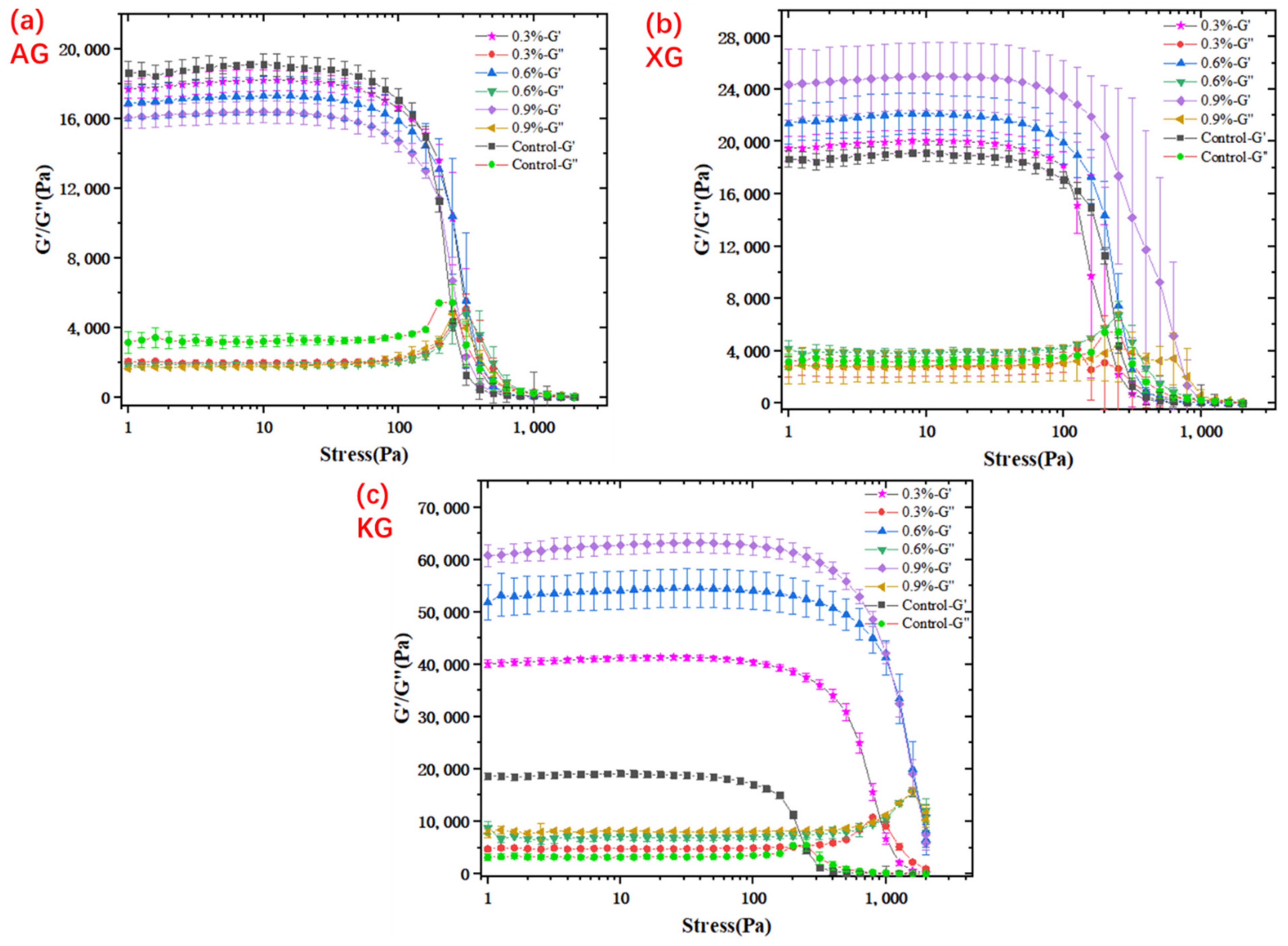

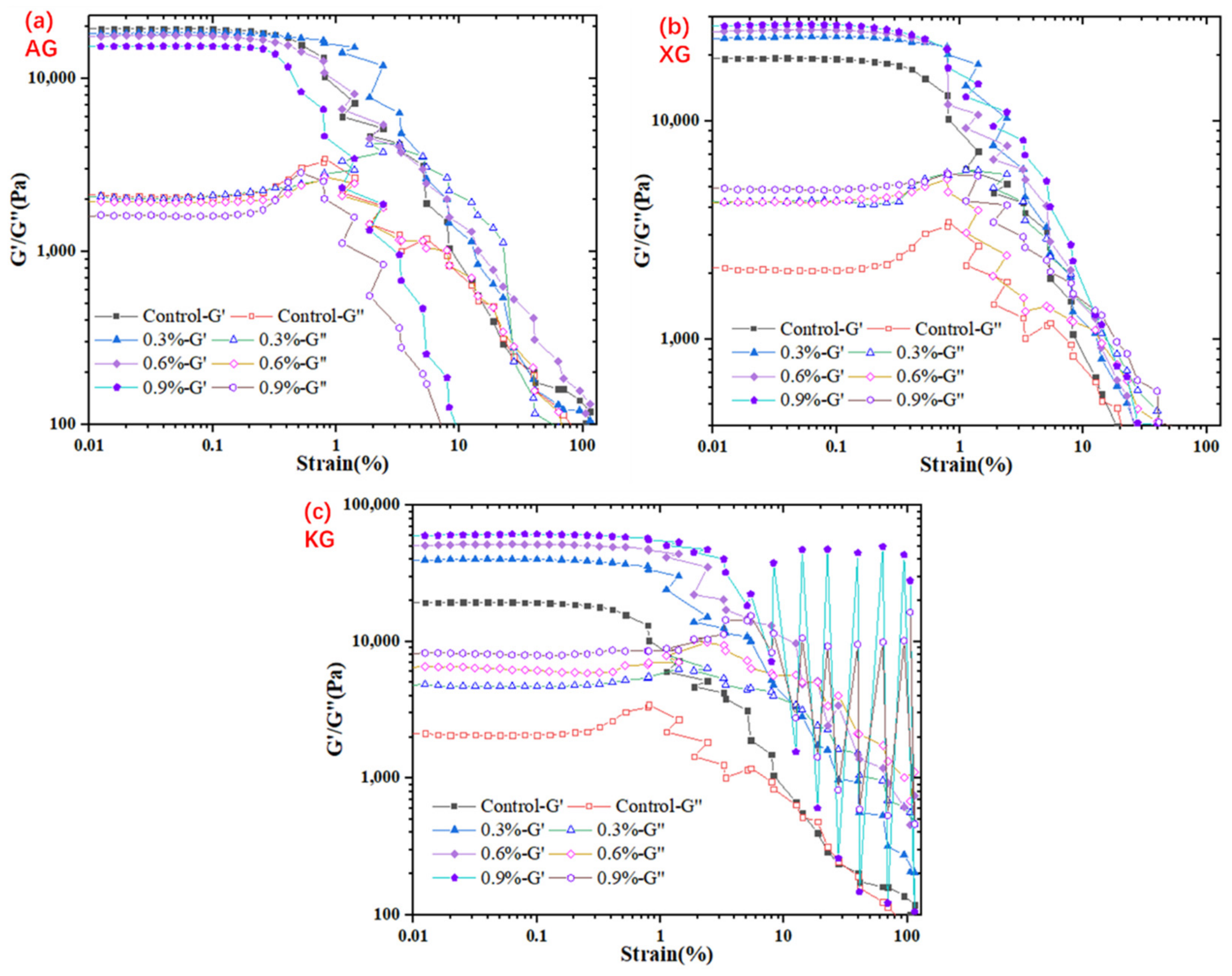




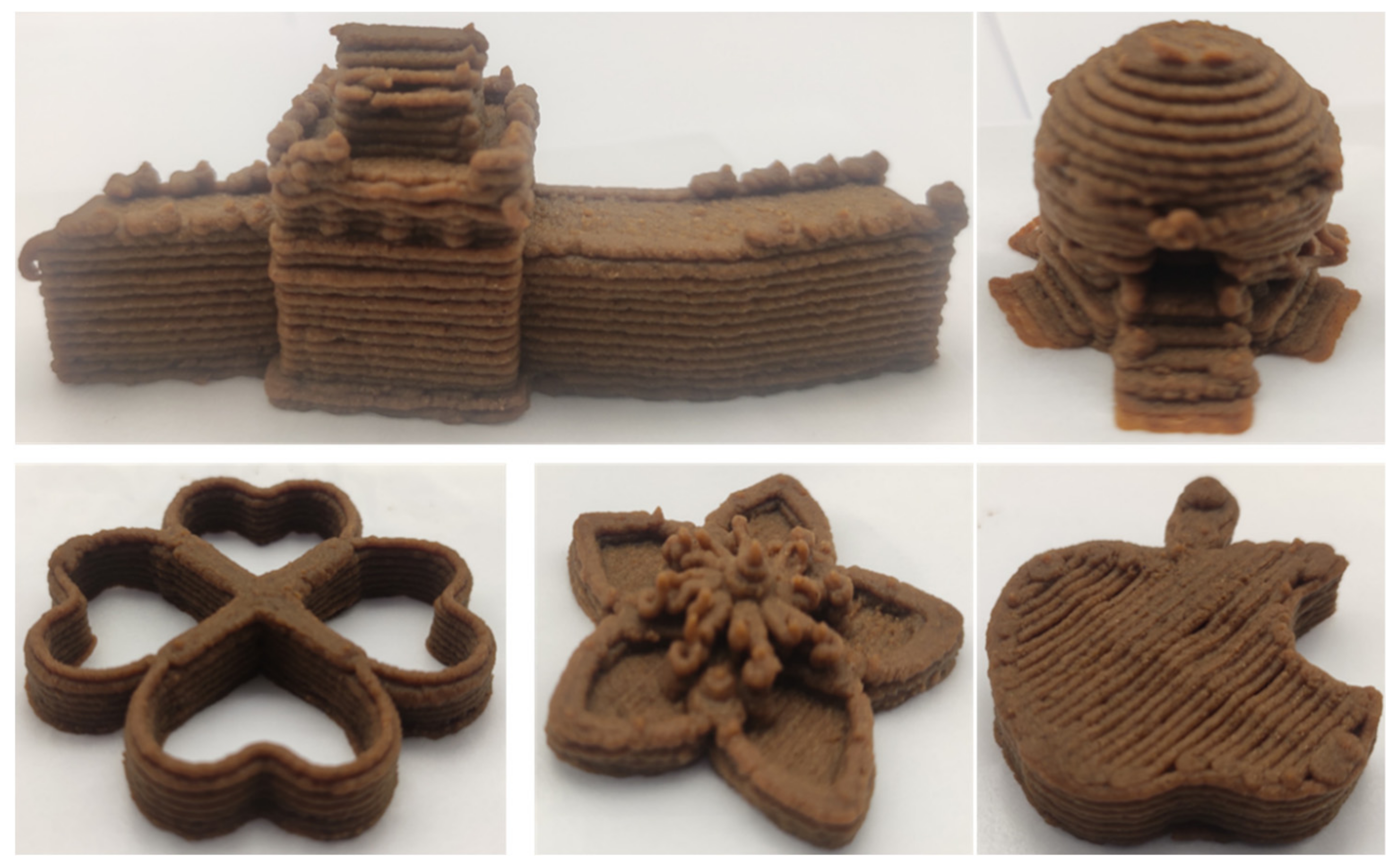
| Classification | Level 4 (Pureed) | Level 5 (Minced & Moist) |
|---|---|---|
| Description | Usually eaten with a spoon (a fork is possible); Cannot be drunk from a cup because it does not flow easily; Cannot be sucked through a straw; Does not require chewing; Can be piped, layered or molded because it retains its shape, but should not require chewing if presented in this form; Shows some very slow movement under gravity but cannot be poured; Falls off spoon in a single spoonful when tilted and continues to hold shape on a plate; No lumps; Not sticky; Liquid must not separate from solid; | Can be eaten with a fork or spoon; Could be eaten with chopsticks in some cases, if the individual has very good hand control; Can be scooped and shaped (e.g., into a ball shape) on a plate;Soft and moist with no separate thin liquid; Small lumps visible within the food; Lumps are easy to squash with tongue; |
| Formulations | η1 | η10 | Pow Law | ||
|---|---|---|---|---|---|
| K (Pa·sn) | n | R2 | |||
| Control | 336.85 ± 3.04 c | 62.54 ± 12.25 ab | 361.37 ± 1.52 c | 0.19 ± 0.01 d | 0.998 |
| AG-0.3% | 313.75 ± 0.49 b | 55.76 ± 5.01 a | 347.17 ± 0.79 b | 0.17 ± 0.01 d | 1.000 |
| AG-0.6% | 289.40 ± 9.81 a | 53.79 ± 2.69 a | 316.53 ± 9.63 a | 0.16 ± 0.00 c | 0.999 |
| AG-0.9% | 273.30 ± 28.26 a | 53.25 ± 6.98 a | 305.69 ± 25.97 a | 0.14 ± 0.05 b | 0.999 |
| XG-0.3% | 377.93 ± 11.43 d | 66.52 ± 8.23 ab | 400.32 ± 16.52 d | 0.18 ± 0.01 d | 0.998 |
| XG-0.6% | 380.30 ± 9.19 d | 61.92 ± 4.68 ab | 408.56 ± 14.46 d | 0.11 ± 0.03 b | 0.999 |
| XG-0.9% | 402.87 ± 63.56 e | 53.41 ± 1.56 a | 469.94 ± 34.00 e | 0.06 ± 0.01 a | 1.000 |
| KG-0.3% | 600.13 ± 64.84 f | 90.85 ± 7.76 c | 670.97 ± 92.96 f | 0.14 ± 0.01 bc | 0.999 |
| KG-0.6% | 1539.50 ± 82.73 g | 165.25 ± 5.30 d | 1691.01 ± 89.26 g | 0.12 ± 0.01 b | 0.999 |
| KG-0.9% | 2122.33 ± 339.65 g | 191.23 ± 26.11 e | 2242.43 ± 340.16 h | 0.10 ± 0.01 b | 0.999 |
| Sample | Fork Pressure Test | Fork Drip Test | Spoon Tilt Test | Comments |
|---|---|---|---|---|
| Control | 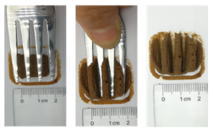 |  | 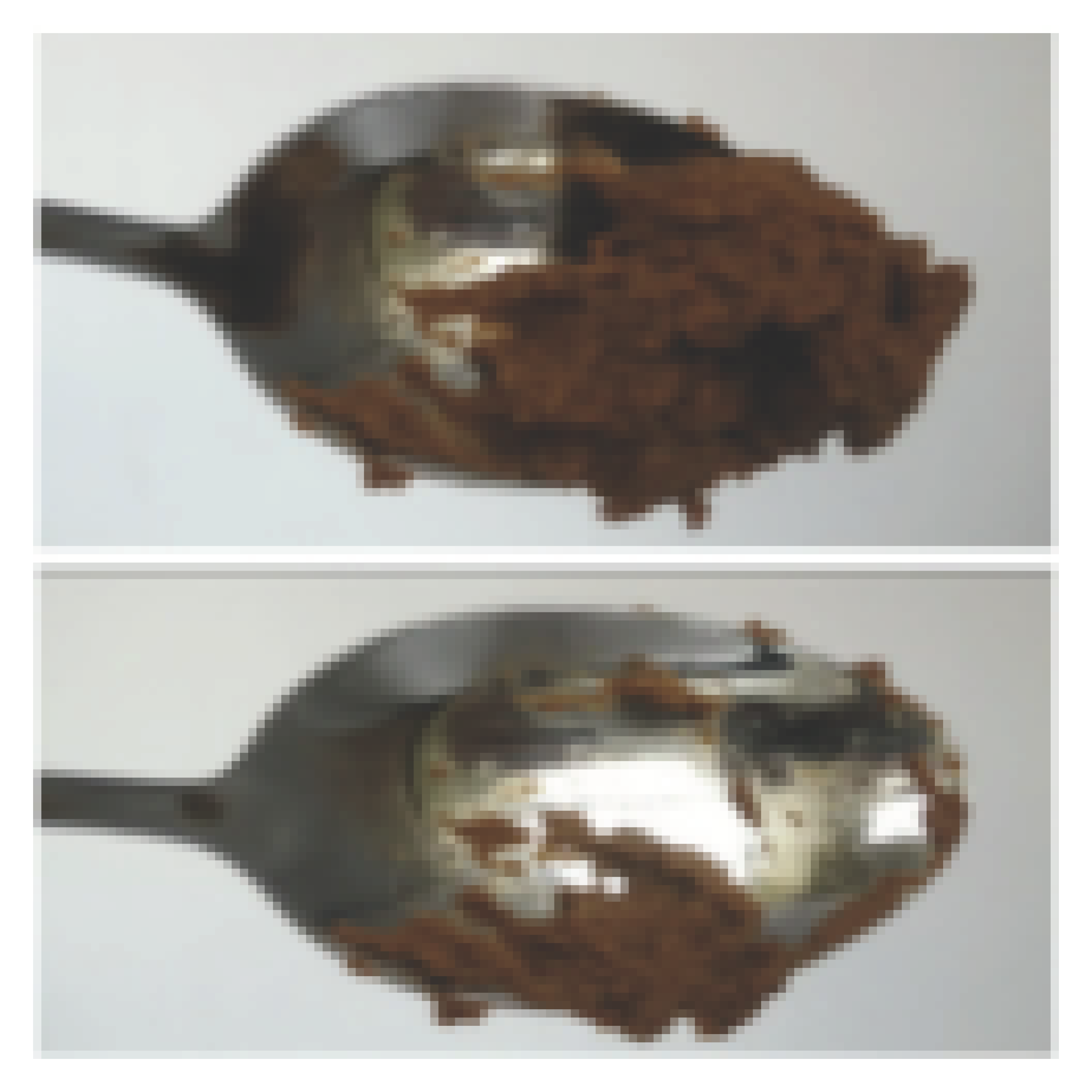 | Level 5-Minced and moist |
| Description: easily mashed with no lumps and granulation; a clear pattern was made on sample surface; no nail blanches white; no recovery of the deformed shape. | Description: sample piled above the fork; no sample form a short tail below the fork. | Description: sample was cohesive enough to hold its shape on the spoon; easily slide off the spoon with a very gentle flick; little food left on the spoon. | ||
| AG-0.3% |  | 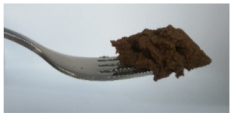 | 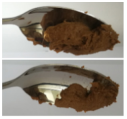 | Not classified |
| Description: easily separated between the prongs of a fork; a clear pattern was made on sample surface; no lumps and granulation; no recovery of the deformed shape. | Description: sample piled above the fork; no sample flow through or form a short tail below the fork. | Description: sample was cohesive enough to hold its shape on the spoon; not easy to slide off the spoon is titled, with lots of food left on the spoon. | ||
| AG-0.6% | 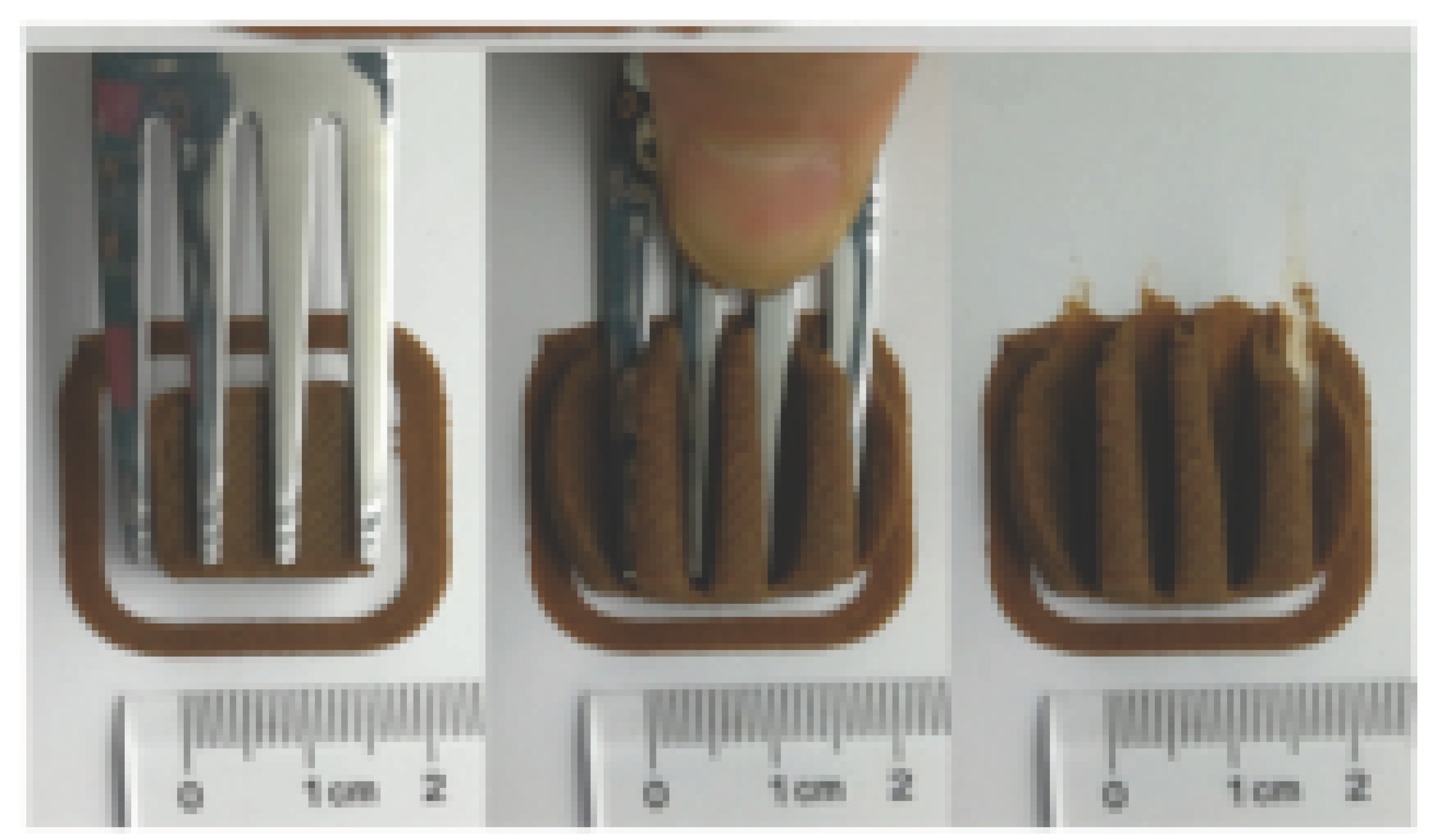 |  |  | Not classified |
| Description: easily separated between the prongs; a clear pattern was made; no lumps and granulation; no recovery of deformed shape when removing the fork. | Description: sample piled above the fork; no sample flow through or form a short tail below the fork. | Description: cohesive enough to hold its shape on the spoon; not easy to slide off when the spoon is titled, with lots of food left on the spoon. | ||
| AG-0.9% | 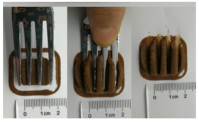 | 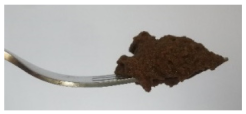 | 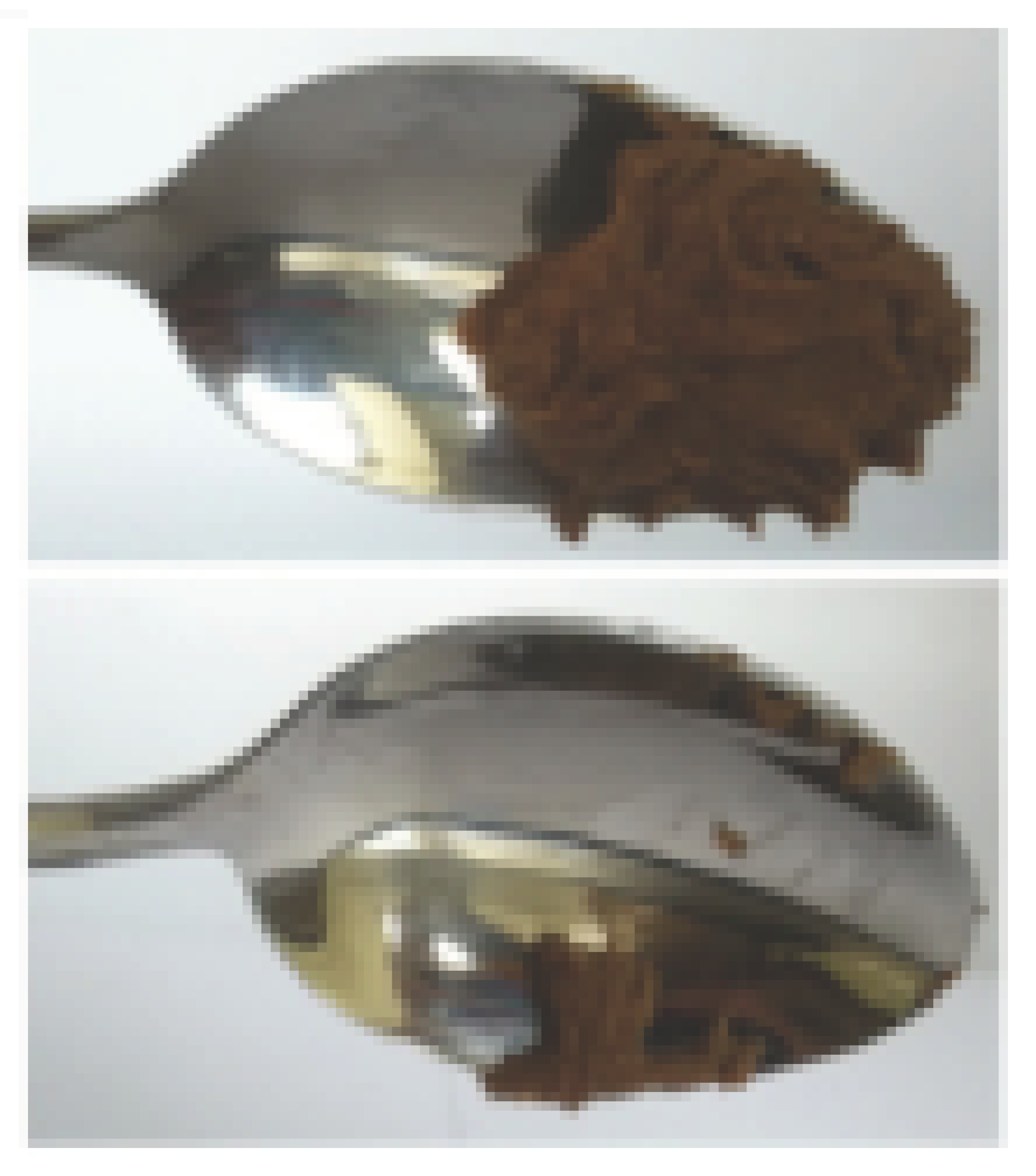 | Level 5-Minced and moist |
| Description: easily separated between the prongs of a fork; a clear pattern was made on sample surface; no lumps and granulation; no recovery of the deformed shape. | Description: sample piled above the fork; no sample flow through or form a short tail below the fork. | Description: sample was cohesive enough to hold its shape on the spoon; easily slide off the spoon with a very gentle flick; little food left on the spoon. | ||
| XG-0.3% | 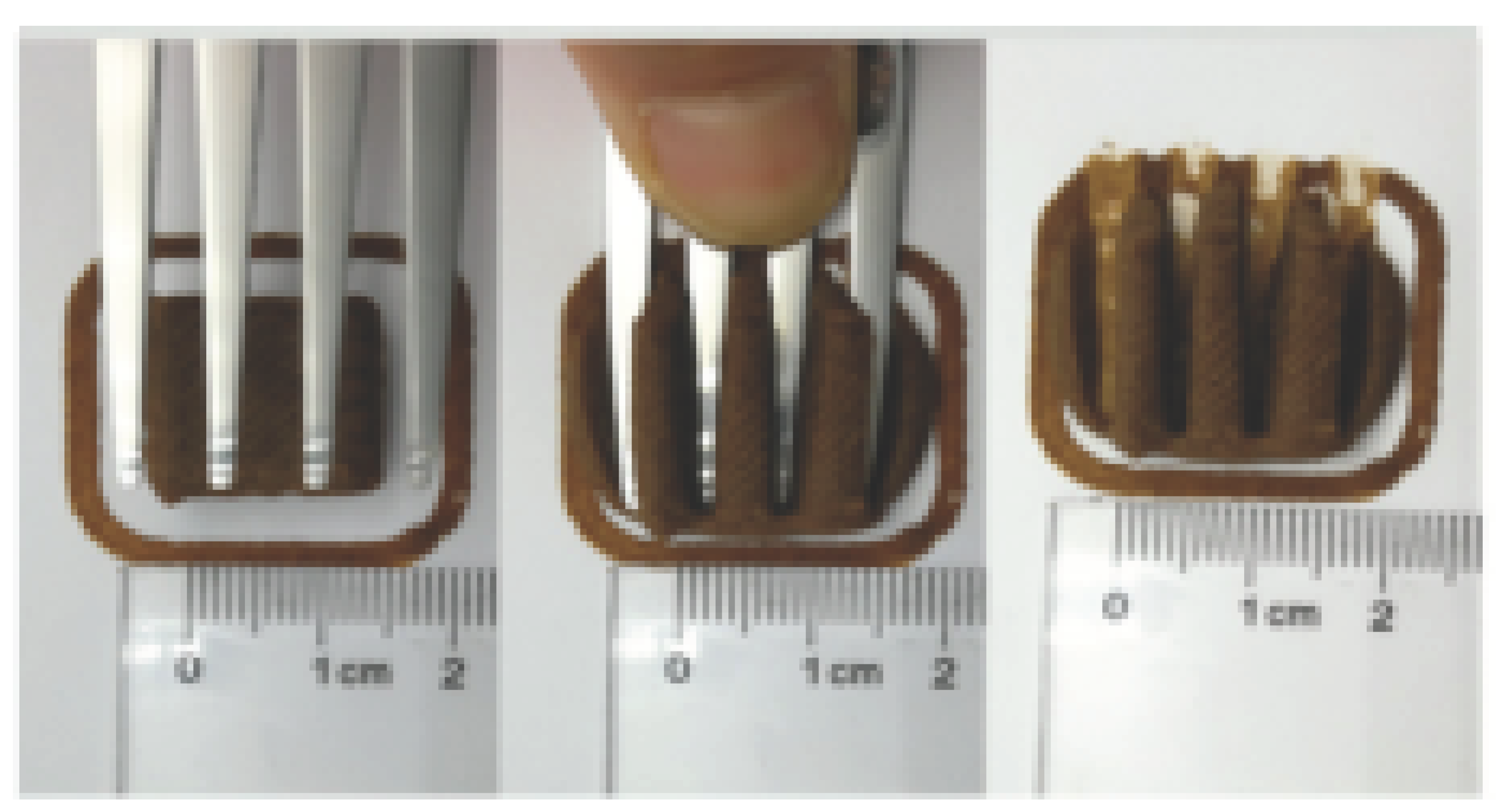 | 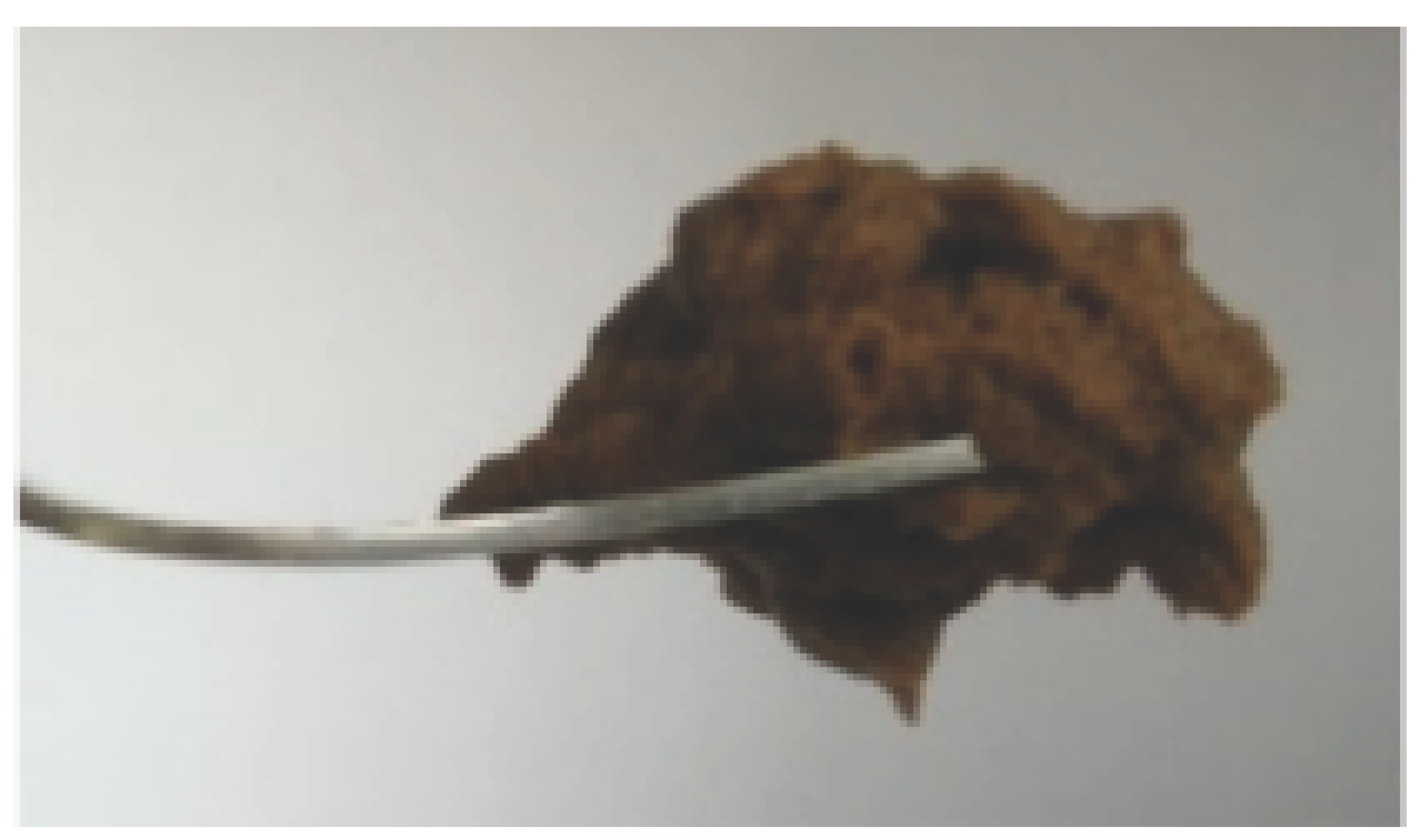 |  | Level 5-Minced and moist |
| Description: easily separated between the prongs of a fork; a clear pattern was made on sample surface; no lumps and granulation; no recovery of the deformed shape. | Description: sample piled above the fork; no sample flow through the fork. | Description: sample was cohesive enough to hold its shape on the spoon; easily slide off the spoon with a very gentle flick; little food left on the spoon. | ||
| XG-0.6% | 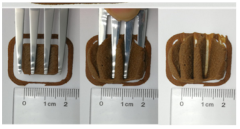 |  | 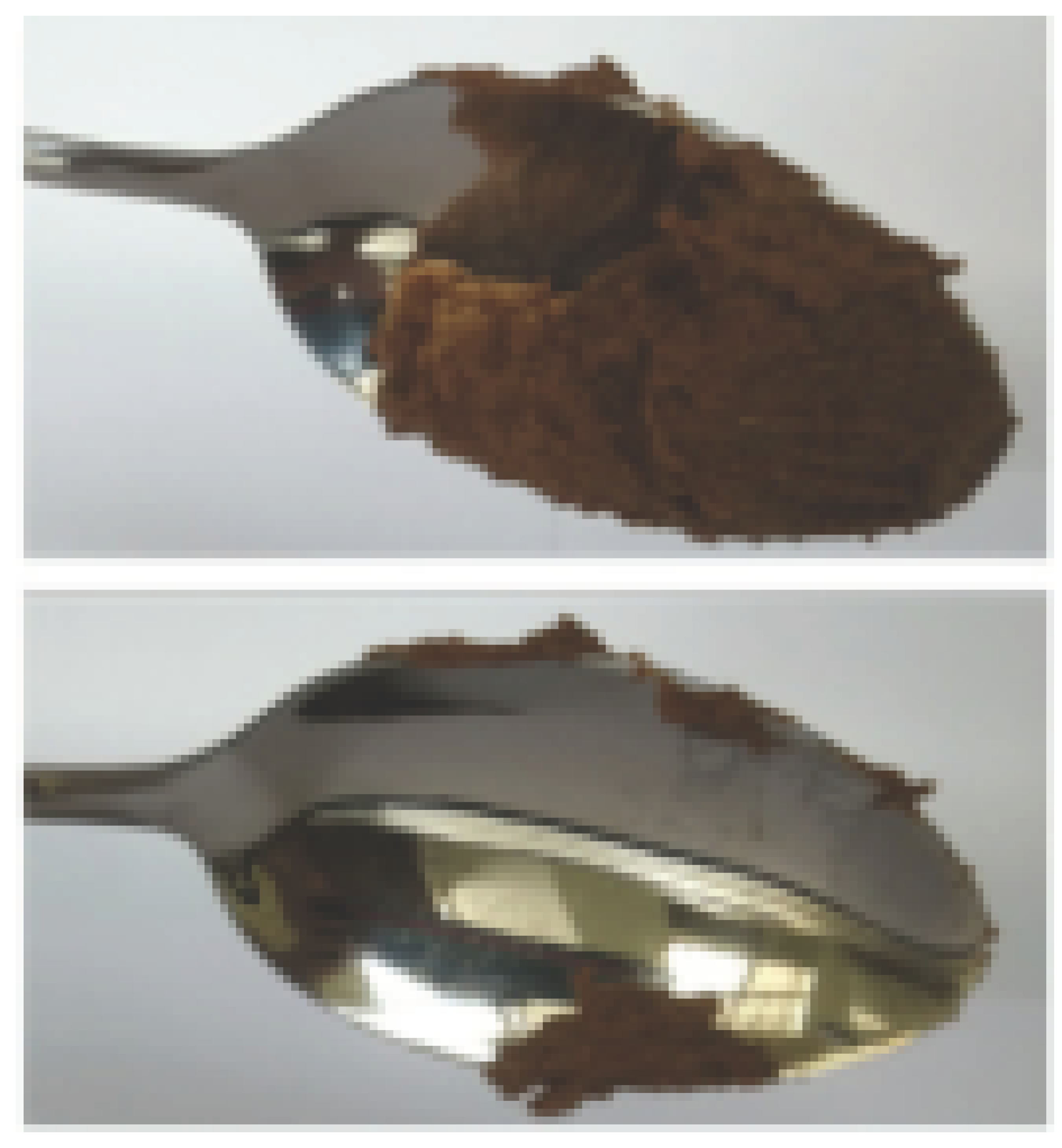 | Level 5-Minced and moist |
| Description: easily separated between the prongs of a fork; a clear pattern was made on sample surface; no lumps and granulation; no recovery of the deformed shape. | Description: sample piled above the fork; no sample flow through the fork. | Description: sample was cohesive enough to hold its shape on the spoon; easily slide off the spoon with a very gentle flick; little food left on the spoon. | ||
| XG-0.9% |  |  | 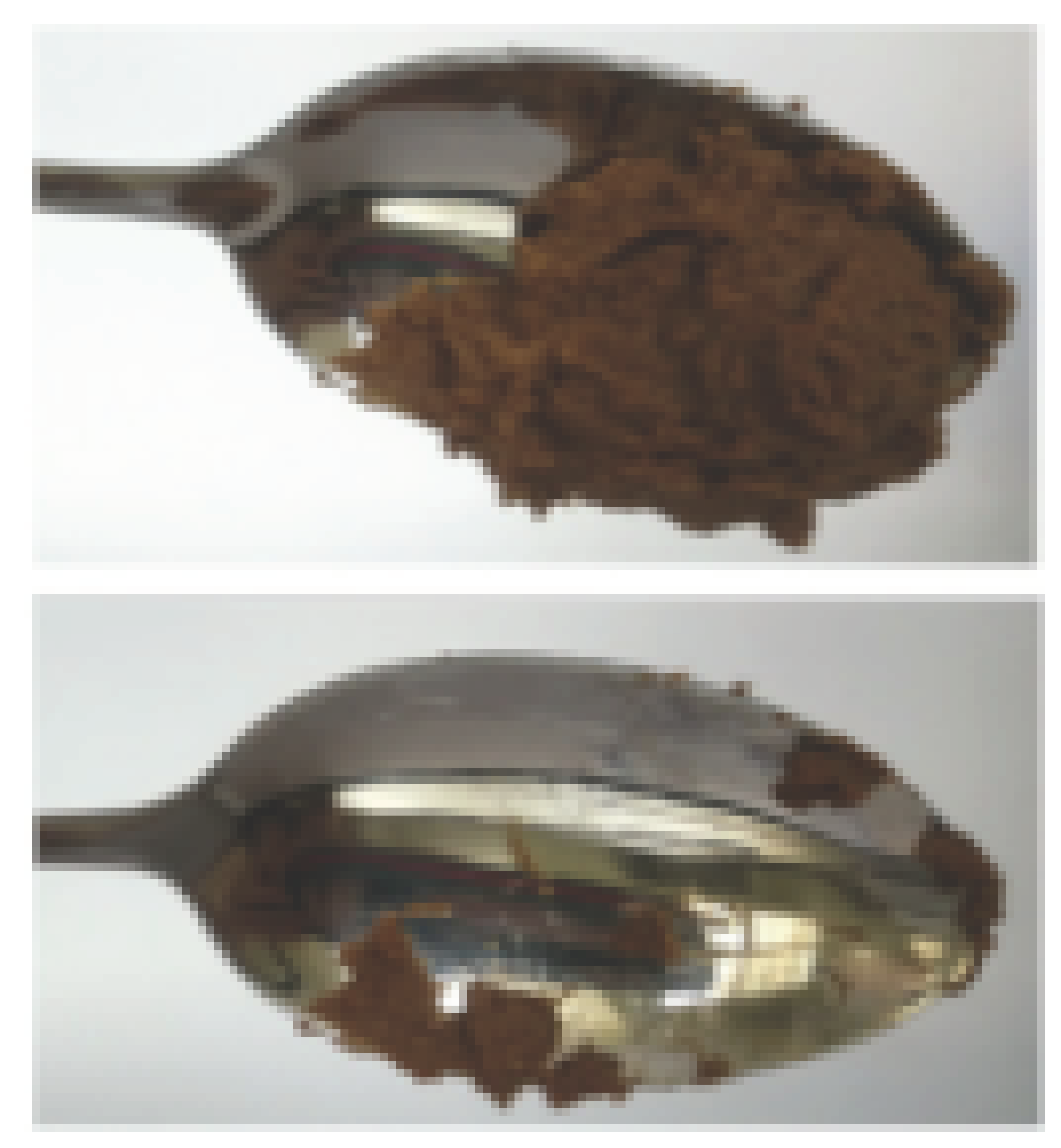 | Level 5-Minced and moist |
| Description: easily separated between the prongs of a fork; a clear pattern was made on sample surface; no lumps and granulation; no recovery of the deformed shape. | Description: sample piled above the fork; no sample flow through the fork. | Description: sample was cohesive enough to hold its shape on the spoon; easily slide off the spoon with a very gentle flick; little food left on the spoon. | ||
| KG-0.3% |  |  | 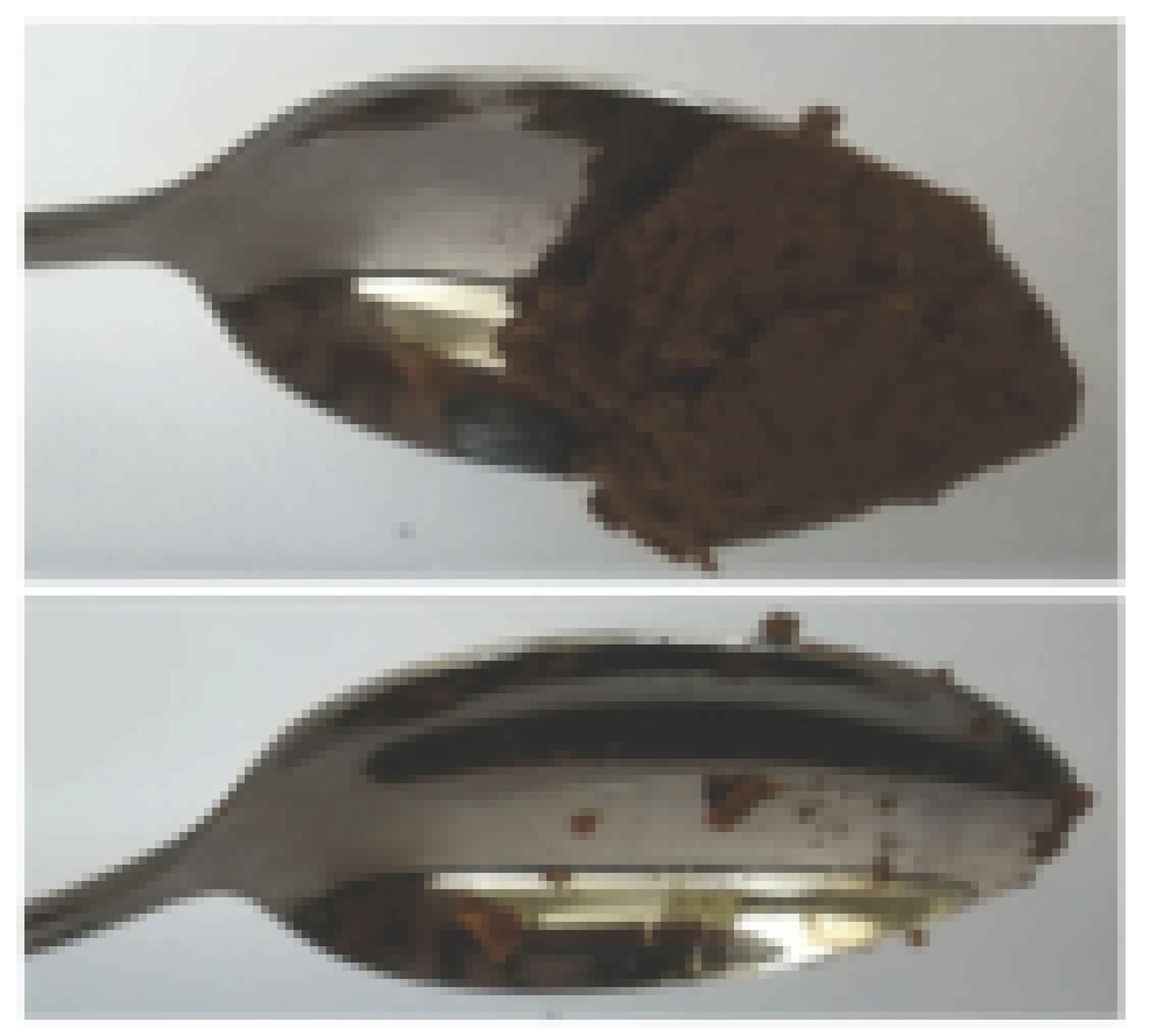 | Level 5-Minced and moist |
| Description: easily separated between the prongs of a fork; a clear pattern was made on sample surface; no lumps and granulation; no recovery of the deformed shape. | Description: sample piled above the fork; no sample flow through or form a short tail below the fork. | Description: sample was cohesive enough to hold its shape on the spoon; easily slide off the spoon with a very gentle flick; little food left on the spoon. | ||
| KG-0.6% | 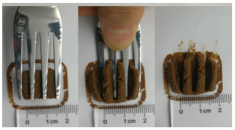 | 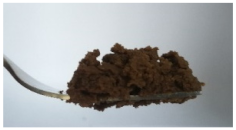 | 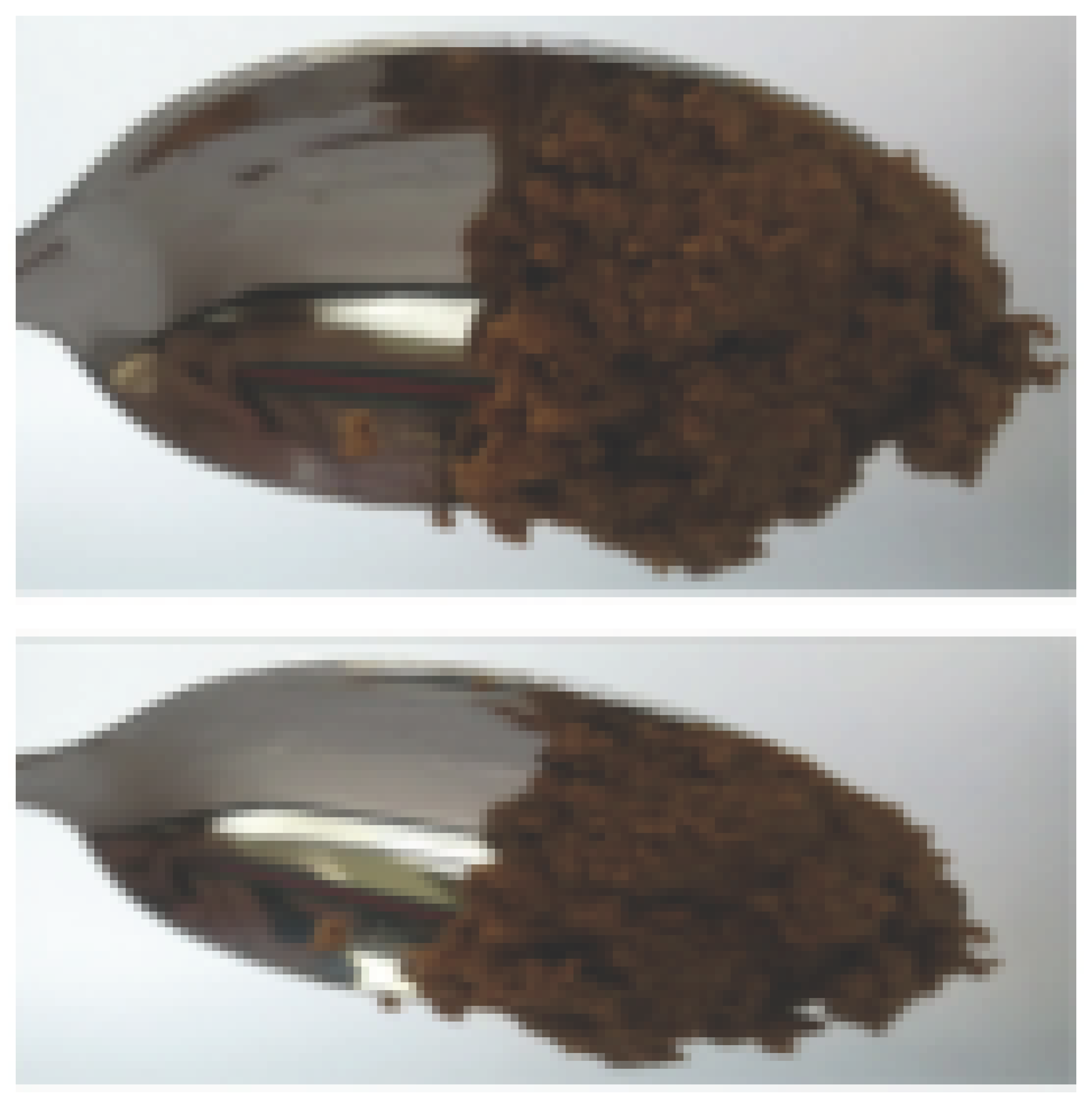 | Not classified |
| Description: easily separated between the prongs of a fork; a clear pattern was made on sample surface; no lumps and granulation; no recovery of the deformed shape. | Description: sample piled above the fork; no sample flow through or form a short tail below the fork. | Description: rough grainy structure; not easy to slide off when the spoon is titled, with lots of food left on the spoon. | ||
| KG-0.9% | 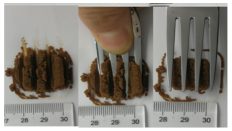 | 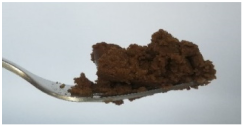 |  | Not classified |
| Description: easily mashed with little pressure; no blanch to white of thumb nail; smooth with no lumps; does not return to orginal shape when removing the fork. | Description: sample piled above the fork; no sample flow through or form a short tail below the fork. | Description: rough grainy structure; not easy to slide off when the spoon is titled, with lots of food left on the spoon. |
| Time after Printing | Control | AG | ||||
|---|---|---|---|---|---|---|
| 0.3% | 0.6% | 0.9% | ||||
| 0 min |  | 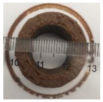 |  | 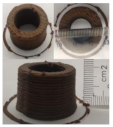 | 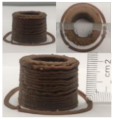 |  |
| 30 min |  |  |  | 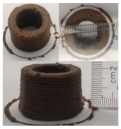 |  |  |
| 60 min |  | 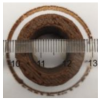 |  | 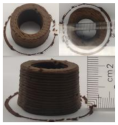 | 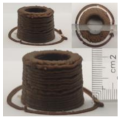 | 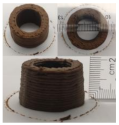 |
| Time after Printing | XG | KG | ||||
| 0.3% | 0.6% | 0.9% | 0.3% | 0.6% | 0.9% | |
| 0 min | 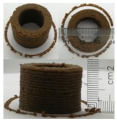 | 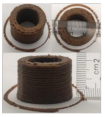 | 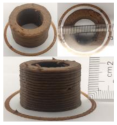 |  |  | 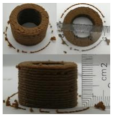 |
| 30 min |  | 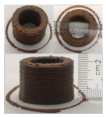 |  | 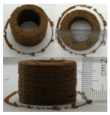 | 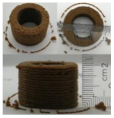 | 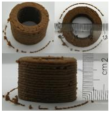 |
| 60 min | 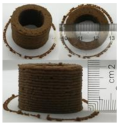 | 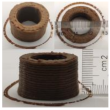 |  |  | 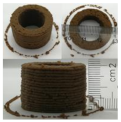 | 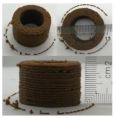 |
Publisher’s Note: MDPI stays neutral with regard to jurisdictional claims in published maps and institutional affiliations. |
© 2021 by the authors. Licensee MDPI, Basel, Switzerland. This article is an open access article distributed under the terms and conditions of the Creative Commons Attribution (CC BY) license (https://creativecommons.org/licenses/by/4.0/).
Share and Cite
Liu, Z.; Bhandari, B.; Guo, C.; Zheng, W.; Cao, S.; Lu, H.; Mo, H.; Li, H. 3D Printing of Shiitake Mushroom Incorporated with Gums as Dysphagia Diet. Foods 2021, 10, 2189. https://doi.org/10.3390/foods10092189
Liu Z, Bhandari B, Guo C, Zheng W, Cao S, Lu H, Mo H, Li H. 3D Printing of Shiitake Mushroom Incorporated with Gums as Dysphagia Diet. Foods. 2021; 10(9):2189. https://doi.org/10.3390/foods10092189
Chicago/Turabian StyleLiu, Zhenbin, Bhesh Bhandari, Chaofan Guo, Wenqi Zheng, Shangqiao Cao, Hongyu Lu, Haizhen Mo, and Hongbo Li. 2021. "3D Printing of Shiitake Mushroom Incorporated with Gums as Dysphagia Diet" Foods 10, no. 9: 2189. https://doi.org/10.3390/foods10092189
APA StyleLiu, Z., Bhandari, B., Guo, C., Zheng, W., Cao, S., Lu, H., Mo, H., & Li, H. (2021). 3D Printing of Shiitake Mushroom Incorporated with Gums as Dysphagia Diet. Foods, 10(9), 2189. https://doi.org/10.3390/foods10092189






